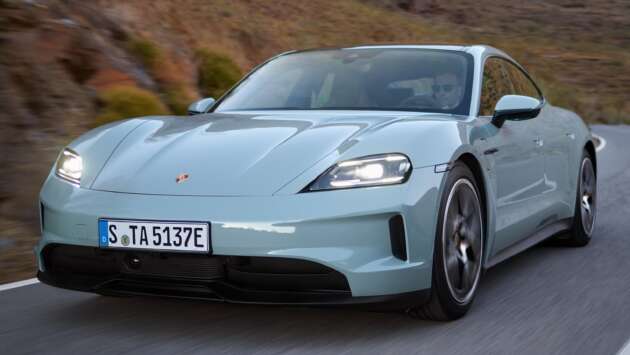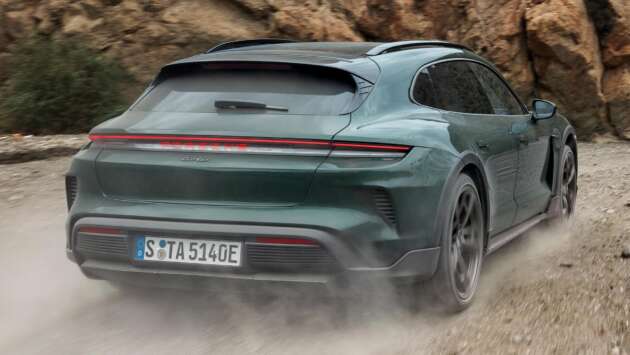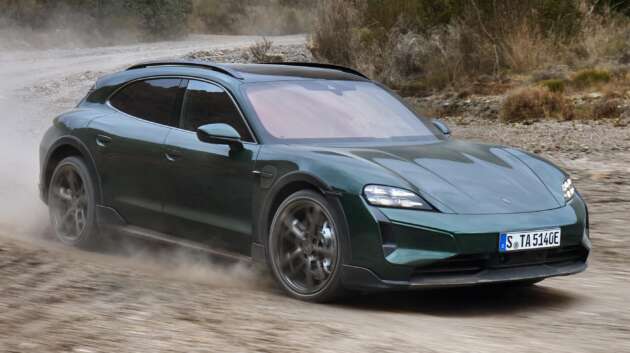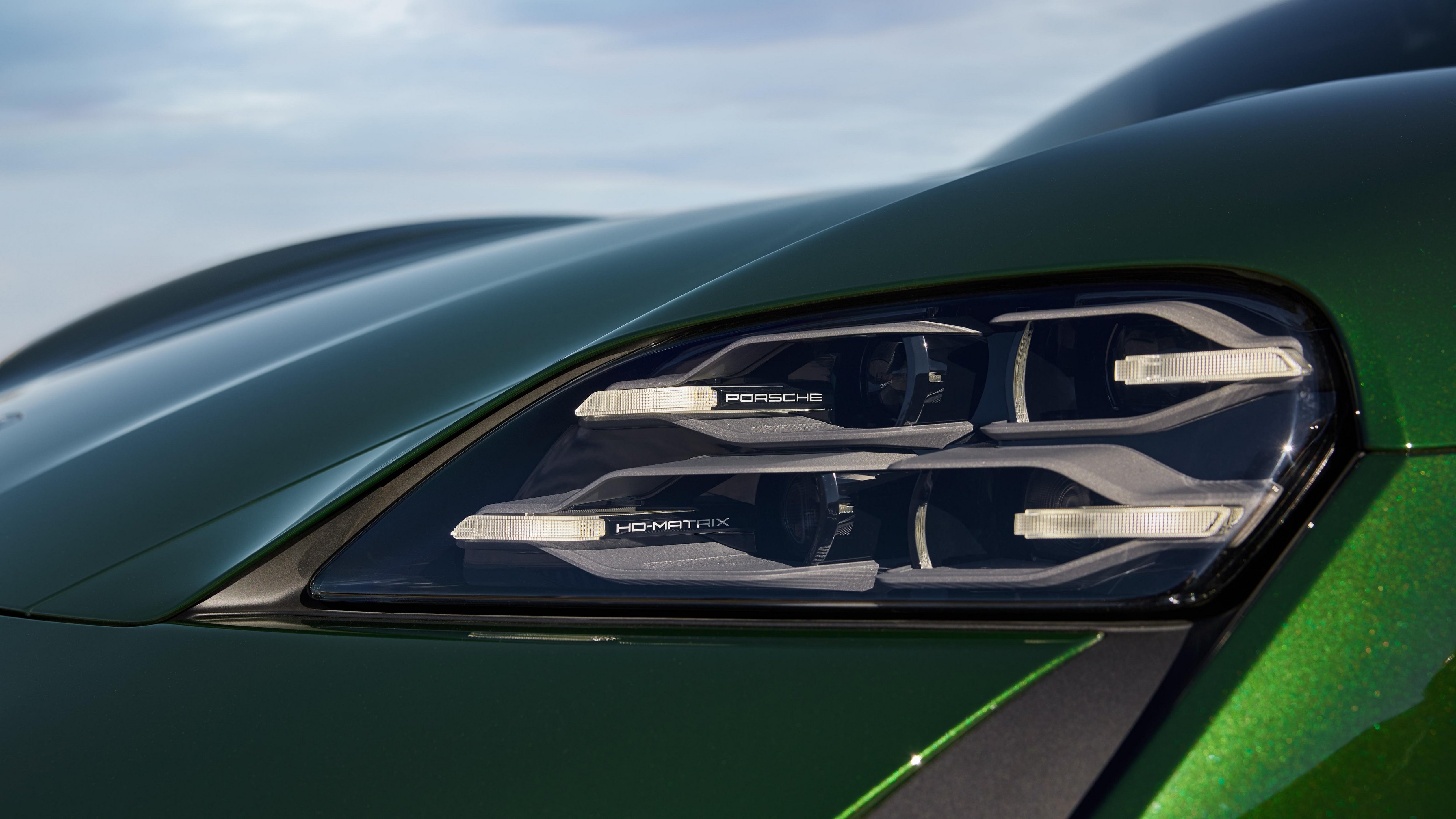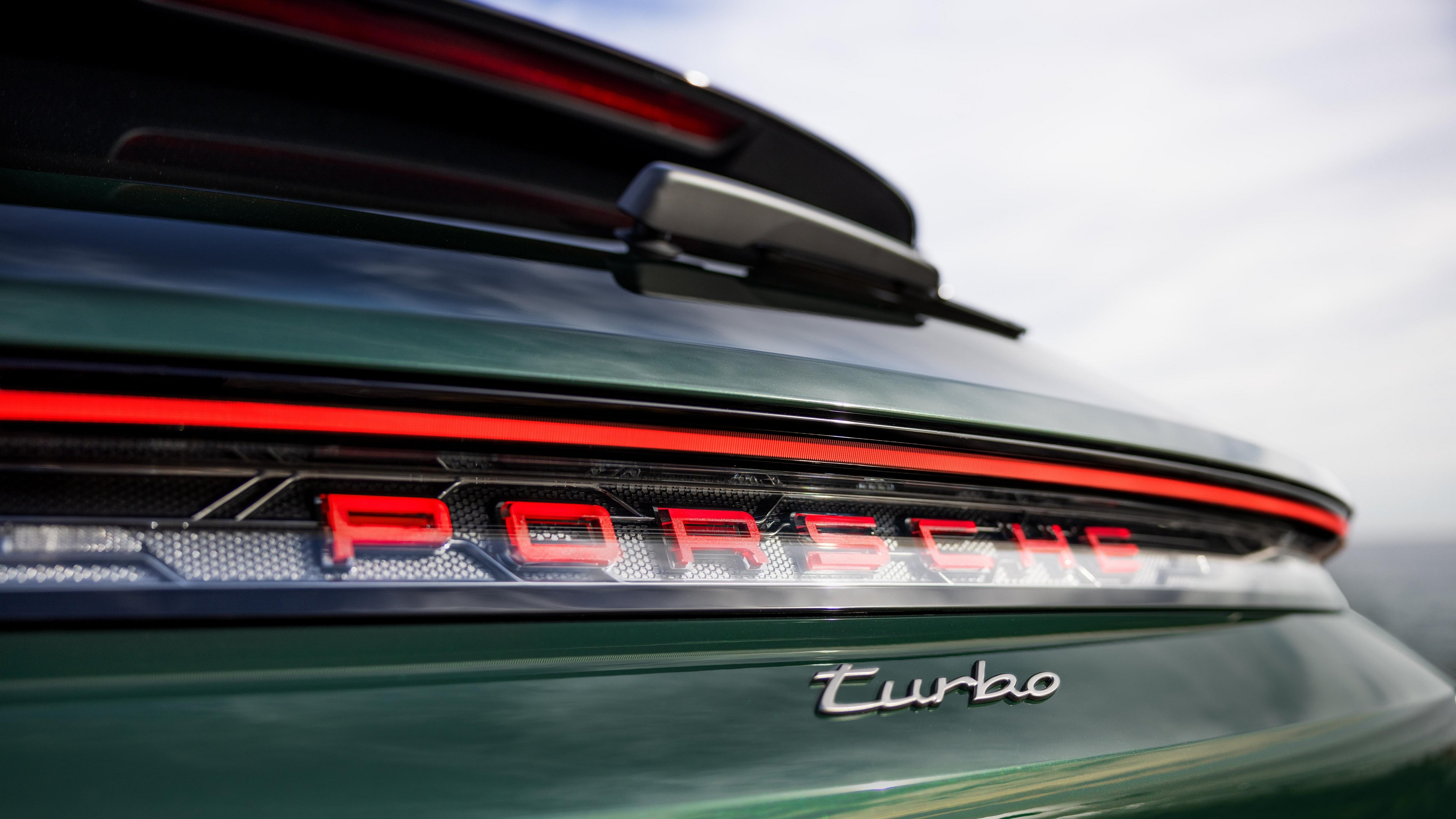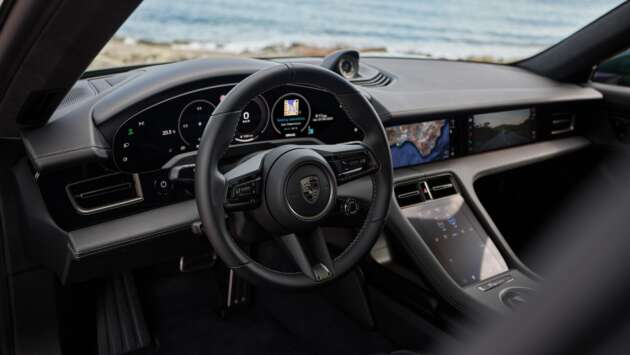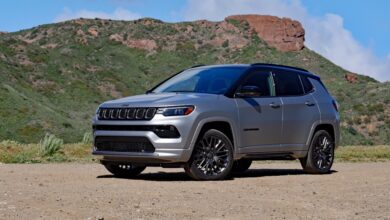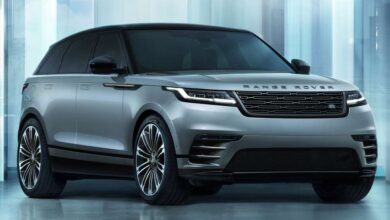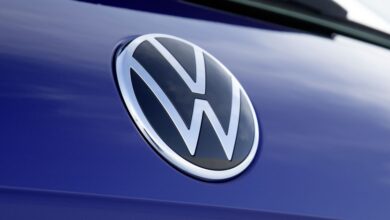2025 Porsche Taycan facelift gets more power and range
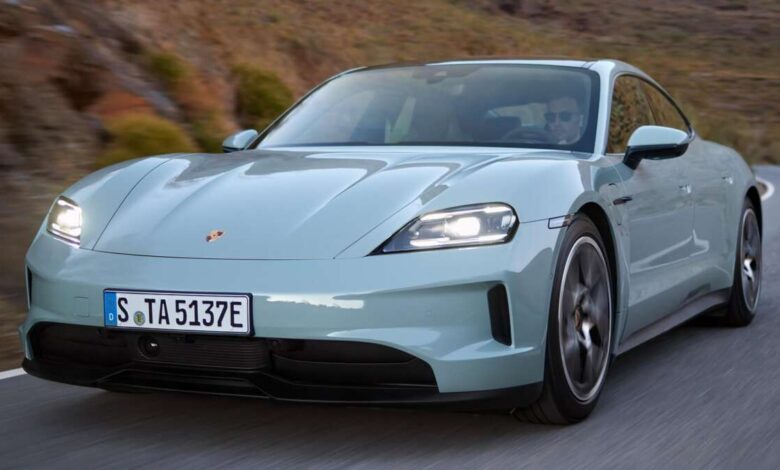
Stop rubbing your eyes – we haven’t mistakenly put up photos of the current Porsche Taycan. This is the facelifted model, and while this blink-and-you’ll-miss-it revamp doesn’t look like much on the outside, there are some significant revisions under the skin that help rectify some glaring flaws on Zuffenhausen’s pioneering electric sedan.
We’ll start with the most important upgrades first – the powertrain. The Taycan’s relatively poor energy efficiency is well known, but Porsche has done its usual painstaking refinements here and there, down to shaving up to 15 kg off the kerb weight. It’s also tweaked the inverter and thermal management system to eke out the extra miles, on top of adding a new rear motor and heat pump.
The Taycan also gets regenerative braking that’s 30% more powerful, now pulling up to 400 kW of kinetic energy to provide greater retardation without using the friction brakes. The result of this is that despite a fairly marginal increase of battery capacity from 93 kWh to 105 kWh (with the Performance Battery Plus option), the claimed range has seen a massive improvement.
Full specs have yet to be released, but the base rear-wheel-drive Taycan is now rated to travel at between 503 and 678 km on a single charge – a huge 35% jump from the previous maximum of 503 km. The changes affect the most powerful Turbo S, too, which has a WLTP range of between 558 and 630 km, up from a maximum of 450 km.
Crucially, these efficiency improvements have come about without sacrificing the Taycan’s neck-snapping performance. In fact, the revised model is even more powerful – that new rear motor makes up to 109 PS and 40 Nm more than before. The base Taycan produces the same 408 PS as before, but it now does this all the time instead of only in launch control. With the Performance Battery Plus, that figure grows to 435 PS, enabling the car to accelerate from zero to 100 km/h six tenths of a second faster at 4.8 seconds.
On all-wheel-drive models, the overboost function can now be activated at a push of a button on the steering wheel, and it now last for ten seconds instead of just 2.5 seconds in launch control. In this mode, the Taycan 4S now makes 544 PS (up from 530 PS), or 598 PS with the Performance Battery Plus (up from 571 PS).
But it’s the high-performance Turbo models that see the biggest increases – up to 884 PS with the “regular” Turbo (from just 680 PS before) and a whopping 932 PS with the Turbo S (up from 760 PS). The latter drops 0.4 seconds from the century sprint, completing it in a scarcely believable 2.4 seconds. Unfortunately, we’ll have to wait a while to see the properly hot model (called Turbo GT, perhaps?), which recently lapped the Nürburgring Nordschleife in 7 minutes 7.5 seconds.
Faster also describes the DC fast charging speed, which has increased from the already-fast 270 kW of the current car to a heady 320 kW. What’s more, the charging curve has been improved, the car now able to sustain an input of over 300 kW for up to five minutes. As a result, the charge time from 10 to 80% for the Performance Battery Plus has been slashed by four minutes to just 18 minutes, despite the 12% increase in battery capacity.
The car can also accept 400-volt charging at up to 150 kW, taking around 35 minutes to charge. Unfortunately, the 22 kW onboard AC charger is still an optional extra, the car coming as standard with just a 11 kW unit. You do at least get the powered charge port doors as standard now.
Elsewhere, all Taycans now come with air suspension, dispensing with the standard steel springs. A new option on the all-wheel-drive models is Porsche Active Ride roll stabilisation, which can even make the car lean into corners like a motorcycle. The system also lifts the Taycan by 55 mm when the doors are opened to aid entry and egress.
As before, you can spec your car with options that include Porsche Torque Vectoring Plus (PTV Plus, with an electronic locking rear differential) and rear-wheel steering. You also get a choice of steel (with a tungsten carbide coating) or carbon ceramic brakes, but new pads reduce residual brake torque right after lifting off the pedal, helping reduce rolling resistance.
The rest of the updates are, as mentioned, pretty minor. The exterior design has been subtly sharpened with a revised front bumper (eliminating the black “tear” from the headlights to the side air vents), a crease on the front fenders and an optional illuminated Porsche logo at the rear. The headlights have also been revised and now come with a quad-projector matrix LED option.
The SportDesign bodykit has also been revised for a more menacing look, while the Turbo and Turbo S models receive the new Turbo-exclusive monochrome Porsche badges and Turbonite grey accents. Inside, you get standard brushed aluminium side sill scuff plates, new leather-free upholstery options (both with Pepita houndstooth fabric), revised two-tone colour scheme choices and new Aluminium Prisma decor.
Porsche has spent more effort in improving the Taycan’s slightly dodgy ergonomics. The Porsche Driver Experience control concept – which includes the 16.8-inch curved instrument display, a 10.9-inch infotainment touchscreen, a separate 8.4-inch portrait touchscreen below it and an optional 10.9-inch touchscreen for the front passenger – has been revised with the latest software, first seen on the facelifted Cayenne.
This includes a new screen in the instrument cluster that provides a 3D visualisation of what the driver assistance systems sees, similar to what Tesla offers. There’s also a new configurable battery display that shows the current state of charge, battery temperature and charging power, while the app icons on the centre touchscreen’s home screen can now be freely moved about.
More changes abound on the steering wheel, which now has a track skip button that replaces the dedicated regen braking button (you can still save the function to the customisable “diamond” button). The rotary drive mode selector is also now standard-fit, and if you have the Sport Chrono pack, there’s now a button in the middle for the aforementioned push-to-pass function. The revised head-up display is still optional, but hey, at least the reverse camera is finally standard.
Also standard is a new driver attention monitor, while the optional adaptive cruise control adds evasive steering assist to help with emergency obstacle avoidance manoeuvres. Last but not least, the Taycan gets deeper integration with Apple CarPlay, which takes over the instrument cluster and allows users to adjust the radio station, air conditioning and ambient lighting without leaving CarPlay. Android Auto is still included, of course.
GALLERY: 2025 Porsche Taycan
GALLERY: 2025 Porsche Taycan 4S Sport Turismo
GALLERY: 2025 Porsche Taycan Turbo S Cross Turismo
Looking to sell your car? Sell it with myTukar.
